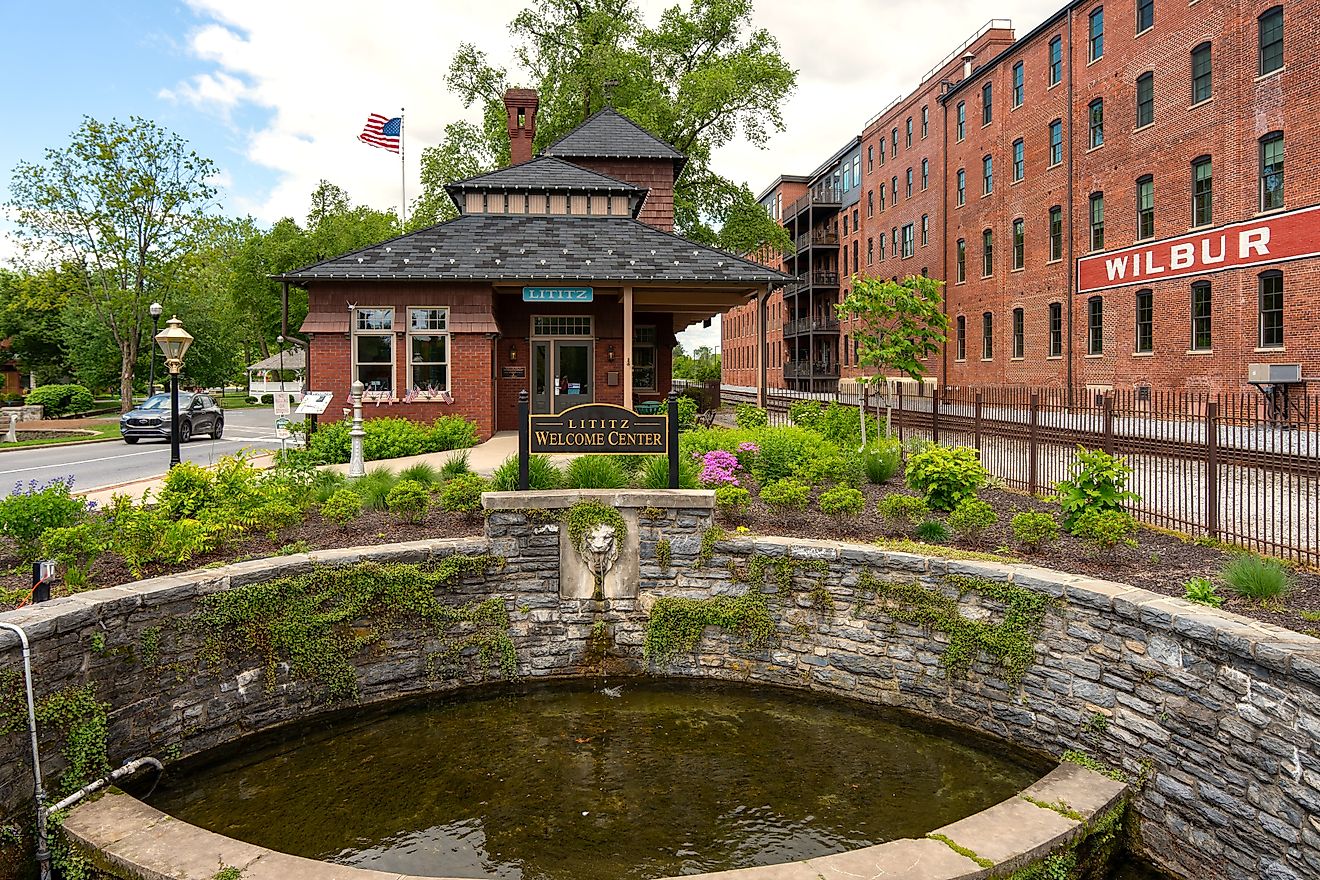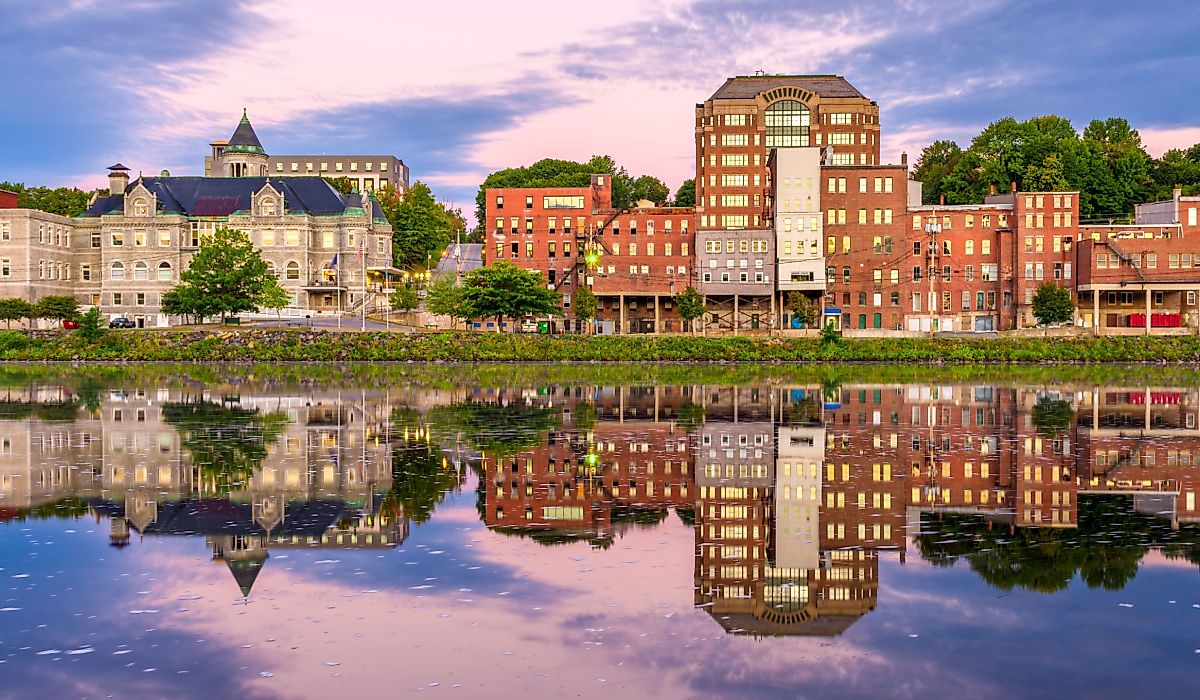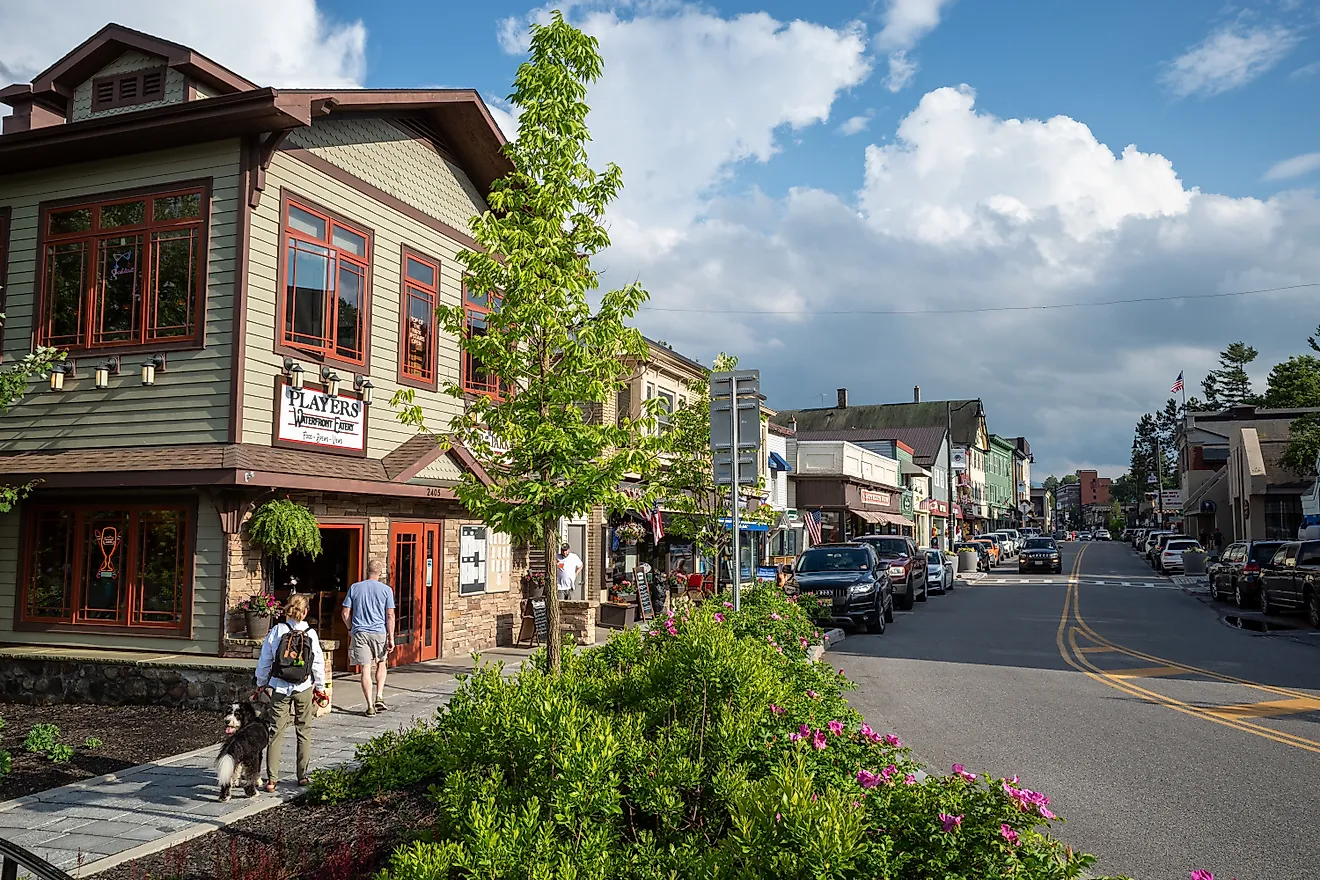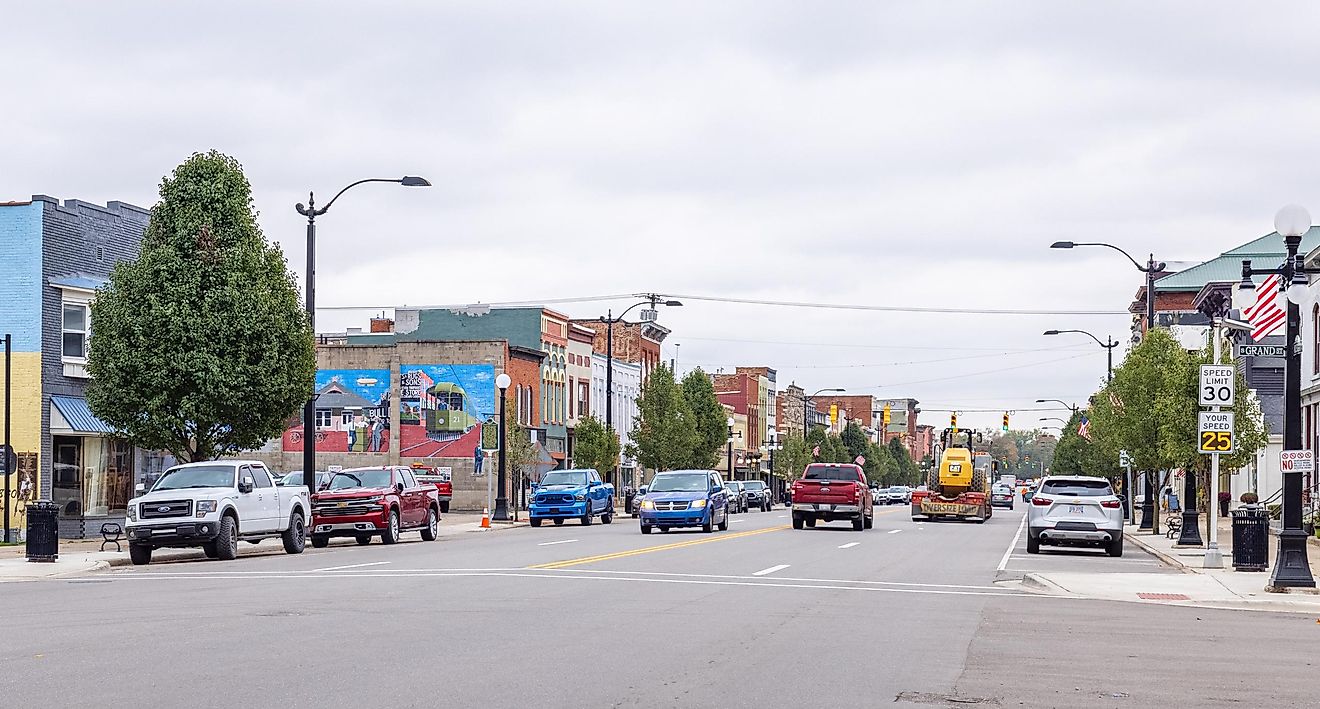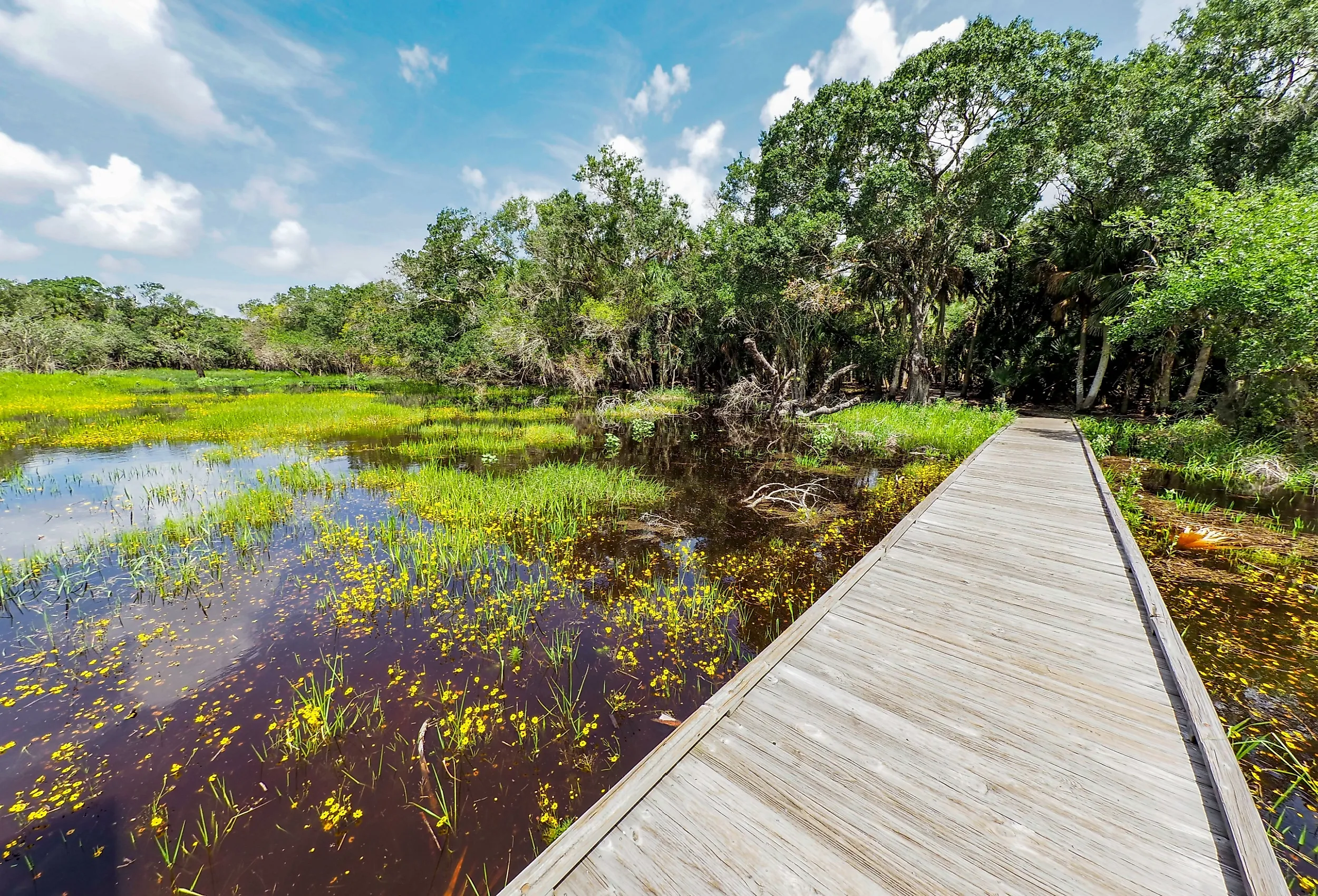
8 Snake Infested State Parks In Florida
Florida’s state parks contain some of the richest habitats in the United States for a plethora of lifeforms, and that includes a remarkable variety of snakes. From subtropical swamps to coastal hammocks, the protected lands we will be discussing today offer the warmth, water, and shelter these legless reptiles need to thrive.
Whether along park trails, rivers, and wetlands where both venomous and nonvenomous species hunt and bask, it is good to know where and when snake encounters are most common. For naturalists and cautious explorers alike, visiting these parks also offers a unique opportunity to observe how snakes fit into Florida’s diverse ecosystems and their crucial role in maintaining overall ecological balance.
Myakka River State Park
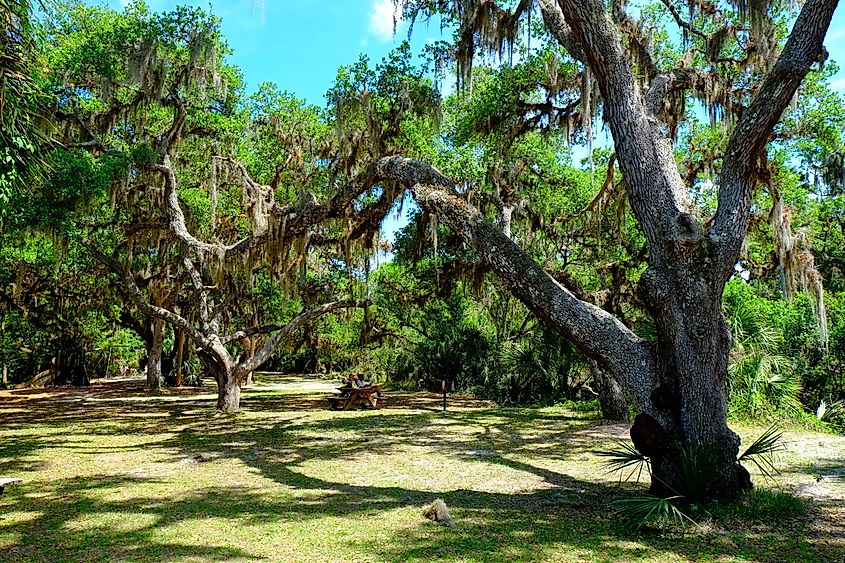
Myakka River State Park in Sarasota County is one of Florida’s oldest and wildest protected areas, and a prime habitat for snakes. The park’s 58 square miles of wetlands, prairies, hammocks, and pinelands support numerous species, including eastern diamondback rattlesnakes, cottonmouths, coral snakes, and various water snakes.
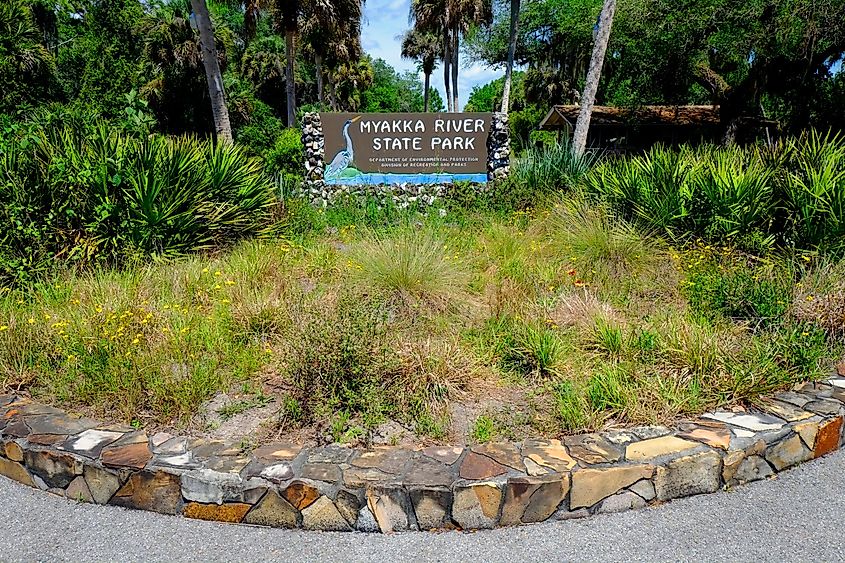
The Myakka River itself, slow-moving and tea-colored, further provides an ideal environment for aquatic and semi-aquatic snakes that subsist on hunting frogs, fish, and small mammals along its banks. Furthermore, abundant vegetation and year-round high temperatures mean human encounters are possible on both trails and boardwalks, particularly during the wet season when snakes are most active. Visitors often recall spotting these slithery critters near the canopy walkway or along the "Birdwalk" trail.
While most snakes here are nonvenomous, the park’s biodiversity lands it among the state’s most reliable places to observe native reptile behavior in a largely undisturbed ecosystem.
Hillsborough River State Park
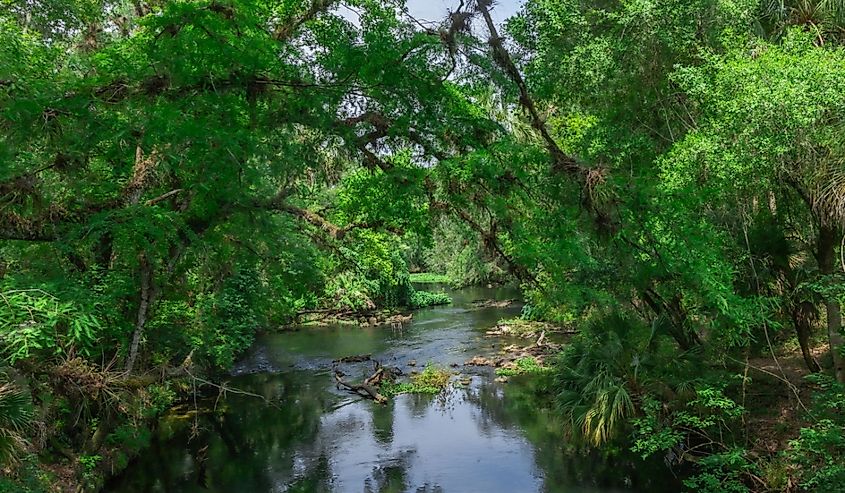
Hillsborough River State Park, located northeast of Tampa, is another hotspot for Florida’s snake population. The park’s combination of cypress swamps, pine flatwoods, and river floodplains makes for prime conditions for species such as the eastern coral snake, Florida cottonmouth, and gray rat snake. To get more specific, the shaded banks of the Hillsborough River provide ample prey and cover, while the park’s limestone outcroppings and dense underbrush create ideal hiding spots.
Snakes in this park are commonly seen crossing the trails near the suspension bridge or basking on the river’s edge after heavy rains. If you are exploring its seven miles of trails, you should stay alert, especially in summer when humidity and flooding drive snakes to higher ground. Also note that most species here are harmless, and that this is a subtropical ecosystem anyone can visit to get a better look at Florida's huge diversity of wildlife.
Jonathan Dickinson State Park

Jonathan Dickinson State Park sits along the Loxahatchee River near Hobe Sound, containing one of the most diverse reptile habitats in South Florida. The park’s 10,000 acres include unique landscapes like sand pine scrub, mangroves, and freshwater marshes, each supporting distinct arrays of snakes. For example, eastern diamondbacks and pygmy rattlesnakes are common in the drier uplands, while black racers, corn snakes, and water moccasins patrol the wetter areas near the river and cypress domes.
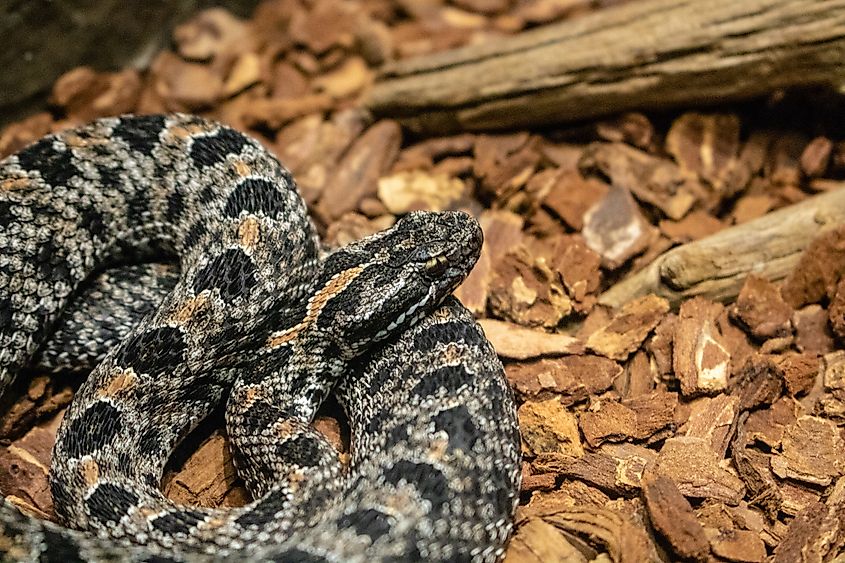
The park’s extensive trail network, including the Ocean to Lake Trail, often cuts through well-established snake territory, particularly in late spring and summer when temperatures drive them into shaded areas. Because the park sits at the meeting point of coastal and inland ecosystems, it also notably sustains both freshwater and salt-tolerant species. This ecological overlap makes Jonathan Dickinson one of Florida’s most active environments for observing these adaptable reptiles in their natural settings.
Ichetucknee Springs State Park
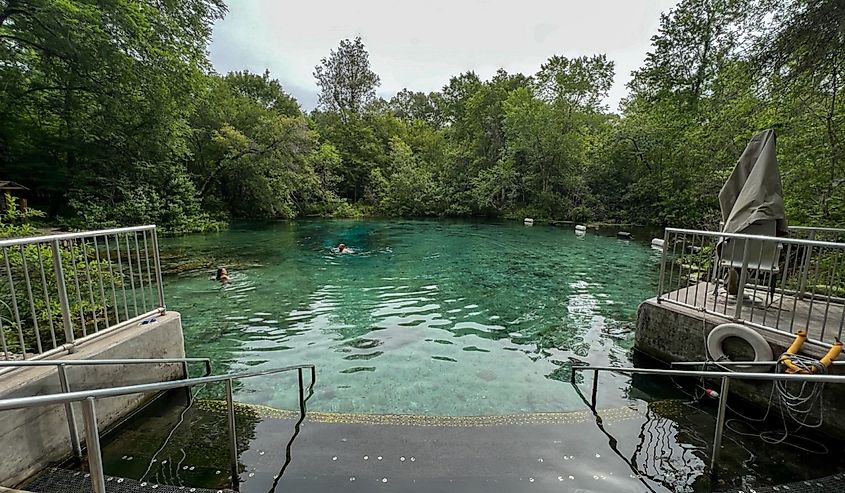
Ichetucknee Springs State Park, in north-central Florida near Fort White, is best known for its clear, spring-fed rivers and hardwood forests. The Ichetucknee River and its tributaries appear to attract water snakes, including banded water snakes and brown watersnakes, while the surrounding hammocks and wetlands provide habitat for cottonmouths, rat snakes, and eastern racers.
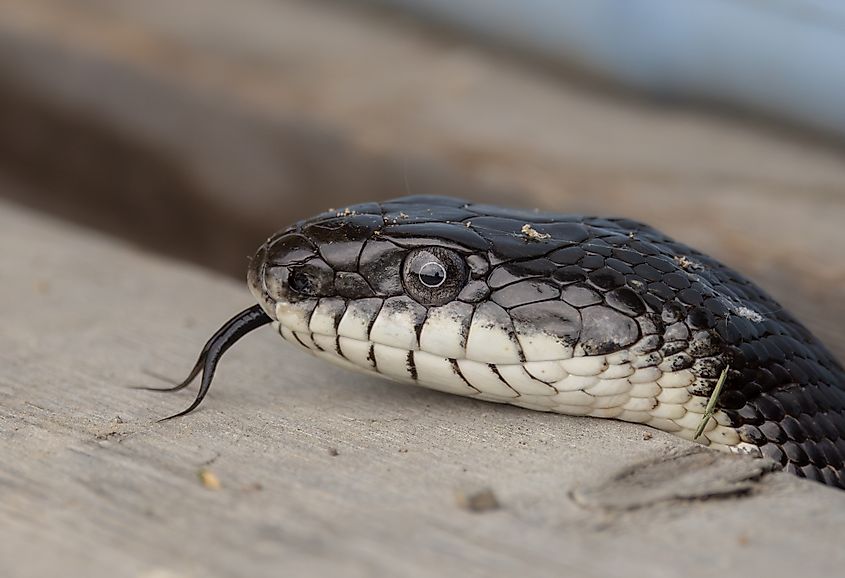
Like most river-based parks, snakes at Ichetucknee Springs are most frequently seen near the riverbanks, under fallen logs, and along the nearby hiking trails, particularly in the warmer months when these cold-blooded creatures are more likely to be out and about. Kayakers and tubers often catch glimpses of snakes sunning on the river’s edge or swimming just below the surface, so be careful where you put your hands!
Anastasia State Park

Anastasia State Park can be found on a barrier island near St. Augustine, combining coastal dunes, salty marshes, and other maritime-related ecosystems to create a truly diverse habitat. There are six venomous species here, and a handful of nonvenomous ones too, including southern black racers, corn snakes, and water snakes that patrol tidal creeks and brackish ponds.

The park’s proximity to both marine and inland ecosystems allows for a unique mix of terrestrial and semi-aquatic species. Its sandy trails, especially those winding through dune scrub, often reveal snakes seeking shade under palmetto fronds or driftwood. Moreover, in freshwater lagoons and tidal inlets, cottonmouths and banded water snakes are occasionally encountered.
While encounters are generally non-threatening, all who come should remain cautious along the riverine and marsh edges, particularly in warmer times of year when both snakes are human visitors are most active.
Paynes Prairie Preserve State Park

Paynes Prairie Preserve State Park, near Gainesville, spans around 23,000 acres of wetlands and prairies. The park houses a broad spectrum of snakes, including eastern diamondback rattlesnakes, cottonmouths, black racers, and water snakes. Its wetlands and shallow ponds attract aquatic snakes, while the open prairie and forested hammocks provide cover for terrestrial species.

Paynes Prairie Preserve's extensive trail system, including the La Chua Trail, often brings those exploring on foot close to snake activity, particularly near water sources or in tall grasses. Seasonal flooding and warm temperatures further encourage snakes to move into more visible areas, so always be aware of where you're stepping, whether it's fall, winter, spring, or summer.
Fakahatchee Strand Preserve State Park
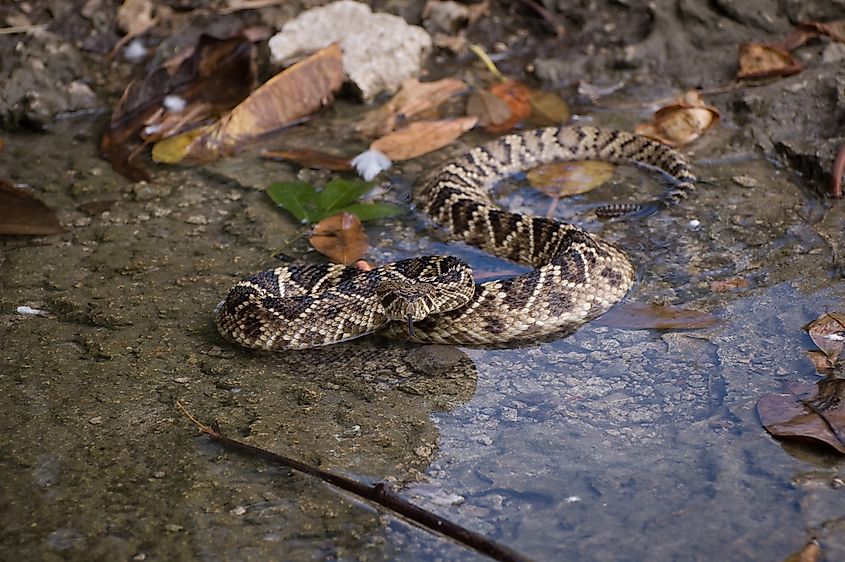
Fakahatchee Strand Preserve State Park, located in southwestern Florida near Naples, is a subtropical swamp renowned for its gorgeous old-growth cypress forests and lazy waterways. Its network of boardwalks and old logging roads allows you to glimpse the park's snakes in their natural habitat, often near waterways or beneath vegetation. Know that seasonal rains and high humidity increase snake activity, particularly in spring and summer.
Fakahatchee’s isolation and minimal human disturbance have allowed its reptile populations to thrive, creating one of the state’s most significant concentrations of snakes. The park’s shaded strands and wetlands provide ideal conditions for numerous species, including eastern diamondback rattlesnakes, cottonmouths, corn snakes, and water snakes. Unfortunately, the region is also a hotbed for invasive pythons, making Fakahatchee Strand Preserve an area of particular focus for Florida's environmental stewards.
Oscar Scherer State Park

Oscar Scherer State Park rests near Sarasota, between the Gulf Coast and Lake Osprey, and encompasses a landscape consisting of pine flatwoods and pristine freshwater wetlands. It's a mosaic of upland and wetland environments that supports both terrestrial and semi-aquatic snakes, giving you a window into the adaptability of Florida’s native species across different ecosystems.
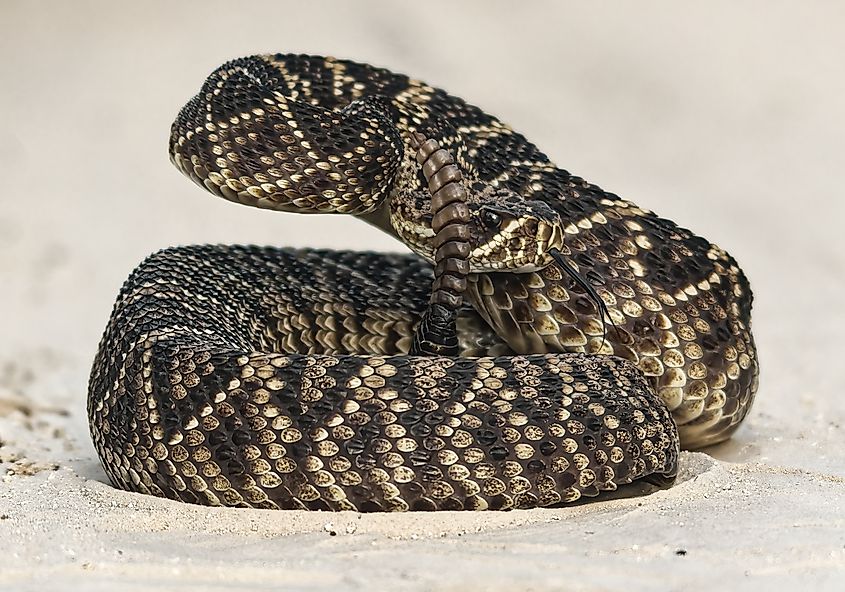
The snake species commonly found here include eastern diamondback rattlesnakes, corn snakes, black racers, and various other water snakes that hunt along ponds and slow-moving streams. Park trails, particularly the Scenic and Scherer Lake trails, pass through verdant clusters of vegetation where snakes often shelter under palmetto fronds or rotting logs. Paired with seasonal rainfall and Florida’s warm climate, it is a haven for snake activity, particularly in spring and/or summer.
Better Understand Florida's Snakes
Florida’s state parks reveal how deeply snakes are woven into the state’s natural systems. Each park, from prairie expanses to dense swamplands, offers insight into how these reptiles adapt to shifting habitats and climates. While encounters may unsettle some visitors, they also highlight just how lively the Sunshine State's ecosystems can be.





